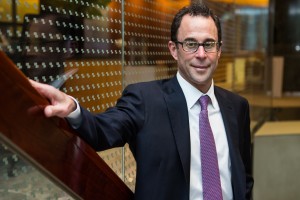Investors have poured more than $3.7 billion into several dozen projects around New York City via the EB-5 program since 2009. And while the industry lacks a comprehensive database, The Real Deal zeroed in on some of the city’s largest and most notable projects to date, using data culled by researchers at New York University and referenced in a report by Professor Jeanne Calderon and attorney Gary Friedland. Here’s a look.
• EB-5 investors chipped in $200 million or a whopping 42 percent — one of the biggest EB-5 contributions percentage-wise in NYC — for Acadia Realty Trust’s 1.8 million-square-foot City Point project, a mixed-use development in Downtown Brooklyn.
• Related Companies raised a record $600 million, for it’s massive 28-acre, 17.4 million-square-foot mixed mega development at Hudson Yards on the Far West Side of Manhattan. The company has raised more than $800 million in EB-5 money in total and controls one-third of the EB-5 market nationwide.

Jeff Blau, CEO of Related Companies
• Even the NYC subway system got an EB-5 boost, when vendor Transit Wireless raised $75 million to bring Wi-Fi underground. For those who want to check Facebook or Instagram while riding home from work, it will be easier to do so in 2017.
• Durst’s residential project at 625 West 57th Street, the Bjarke Ingels-designed pyramid building, solicited $180 million from 360 EB-5 investors. The EB-5 component is 26 percent of the capital stack for the $685 million development.
• At Extell’s 555 Tenth Avenue, the developer got a $325 million senior loan to cover 71 percent of the project’s cost. But rather than putting up the rest of the equity on its own, it tapped EB-5 investors to throw in $100 million more, and put in only $30 million itself. That practice is becoming common among developers citywide.
• Large-scale EB-5 projects are on the rise: Silverstein Properties started raising $250 million for its Four Seasons Hotel at 30 Park Place in 2013. It’s already reached the project’s fundraising goal.
• Plaza Capital’s New York Wheel may be the only Ferris wheel to raise EB-5 funds, and it did so to the tune of $150 million from 300 investors. A lawyer for the developer told TRD that the project tapped EB-5 because it had difficulty attracting a conventional loan. “No one knows how to analyze that project for conventional bank financing,” said Steven Polivy of Akerman.

Liberty Gardens in Brooklyn
• The Lightstone Group is one of several big developers in New York City to form an in-house regional center to raise EB-5 money. It gathered $60 million from 120 investors for its 429-unit luxury rental at Liberty Gardens in Carroll Gardens. Other developers with regional centers? Related, Silverstein, Extell and hotel building firm the Lam Group.
• Forest City Ratner raised $577 million in EB-5 funding to jump-start construction of its long-stalled Atlantic Yards, which was quickly renamed Pacific Park Brooklyn when Chinese developer Greenland Group acquired a 70 percent stake in the project.
• The Brooklyn Navy Yard is one of the few EB-5 projects owned by a city. The project attracted $247 million from EB-5 investors in four tranches. The money will go to expand Steiner Studios, the production set used by movies such as “The Wolf of Wall Street” and TV shows including “Girls.”
